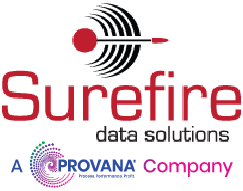Regardless of what field you find yourself in, knowledge is power, with data and its organization an element of every day. But how does data get sorted to maximize efficiency?
What’s the BIG deal with BIG DATA?
Data has evolved from static to fluid, and consistently growing in complexity. As seen in Kenneth Cukier’s TEDtalk, “more data doesn’t allow us to see [just] more, it allows us to see new, allows us to see better, and allows us to see different.” The wheels that drive data values are known as “the Four V’s” of big data. And what is “big data”? If there has been an exponential amount of new data coming into your system and it’s a struggle to keep it maintained, that is big data, and it can be streamlined. The Four V’s measure the CLV (customer lifetime value) in relation to decision making and customer relationship management, since information is only valuable in the terms of what it’s possession can lead to.
Variety: Different Forms of Data
How many databases are related to yours? The more wide-ranging customer data you possess, whether from social media, contact logs, or CRM reports, the more distinctions emerge from that data to better influence educated decision making rather than going off emotional or non-factual judgements.
Velocity: Analysis of Streaming Data
This refers to how quickly your data is coming in. As your data storage platform takes in large amounts of data more rapidly, it needs to be processed more quickly by being filtered through reporting, queries and the like. Again, with clarity of information comes well-informed decision making.
Veracity: Uncertainty of Data
Is there any doubt where this data came from? This “V” eliminates errors. “The more consolidated, conformed, cleansed, consistent current the data you have on customers, the more likely you are to make the right decisions based on the most accurate data” (James Kobielus, IBM)
Volume: Scale of Data
Again, there is no qualifying number for data storage to be considered “big.” Growth in the amount of incoming data is a certainty, and having a greater comprehensive view of data allows more customer awareness thanks to the scale of information received.
Enterprise software architect, Jason Tee, points out in this article that, “It’s always nice to hire a consultant with experience handling every issue you currently face. But many of big data’s problems are new. This means getting a one-to-one match between a consulting firm’s previous projects and your enterprise’s project isn’t always possible. This is a good reason to find a firm that uses a collaborative approach to problem solving.”
According to Cukier, big data is going to challenge the structure of the business world in a similar manner as the Industrial Revolution. However, rather than advances in industry through the means of the machine, the Intelligence Revolution is on the rise. Data analytics can’t merely be used for historical reporting and reactive solutions– enterprises will be experiencing new problems with data and should utilize predictive planning. Through use of the Four V’s, procure the new, the better, the different and enhance your business and rise with the revolution.


